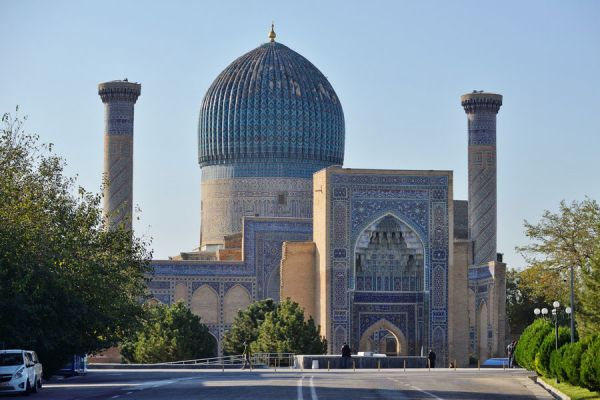Gur-Emir
One of the main historical monuments of Samarkand is the tomb of Gur-Emir, which contains the remains of the great ruler and conqueror Tamerlane, as well as many members of his family. The name of this mausoleum can be translated as "tomb of the ruler" or "tomb of the Emir".
The history of the Gur-Emir Mausoleum
The construction of this memorial began in 1403 by order of Timur himself. The place for the construction of this building was the ruins of an ensemble of buildings that were built by Muhammad Sultan— one of the grandsons of the emir. There were madrasas, a mosque, many minarets and a khanaka in this complex. The young prince erected all these buildings for himself and even lived there for a while. But Timur, for unknown reasons, ordered the complete dismantling of this complex, and the construction of a new mausoleum in its place. Only the tsarevich's crypt, minor fragments of marble walls with gold plating and blue domes of minarets have survived from the buildings of Muhammad Sultan to this day. But the royal tomb of Gur-Emir still stands, having practically preserved its original appearance. Thousands of tourists and pilgrims visit this place every year to pay their respects to the fearless conqueror Timur.
The appearance of the Gur Emir is simply overwhelming with its splendor and grandeur. Some researchers claim that this tomb became the prototype and basis for such famous historical monuments as Humayun and the Taj Mahal. Naturally, over the many centuries of the existence of the Gur-Emir memorial, numerous legends and creepy stories have been passed down from generation to generation.
Tamerlane was the first to be buried here. This great warrior spent most of his life in campaigns, battles and battles. Unsurprisingly, he died on a campaign, but not by sword or arrow. The fearless leader was struck down by common pneumonia when he was returning home from another successful battle. The body of the conqueror was taken to Samarkand and buried with all honors in the tomb of Gur-Emir. For quite a long time, his sarcophagus was the only one in the tomb, but during the reign of Ulugbek, other members of the Timurid family began to be buried there.





























